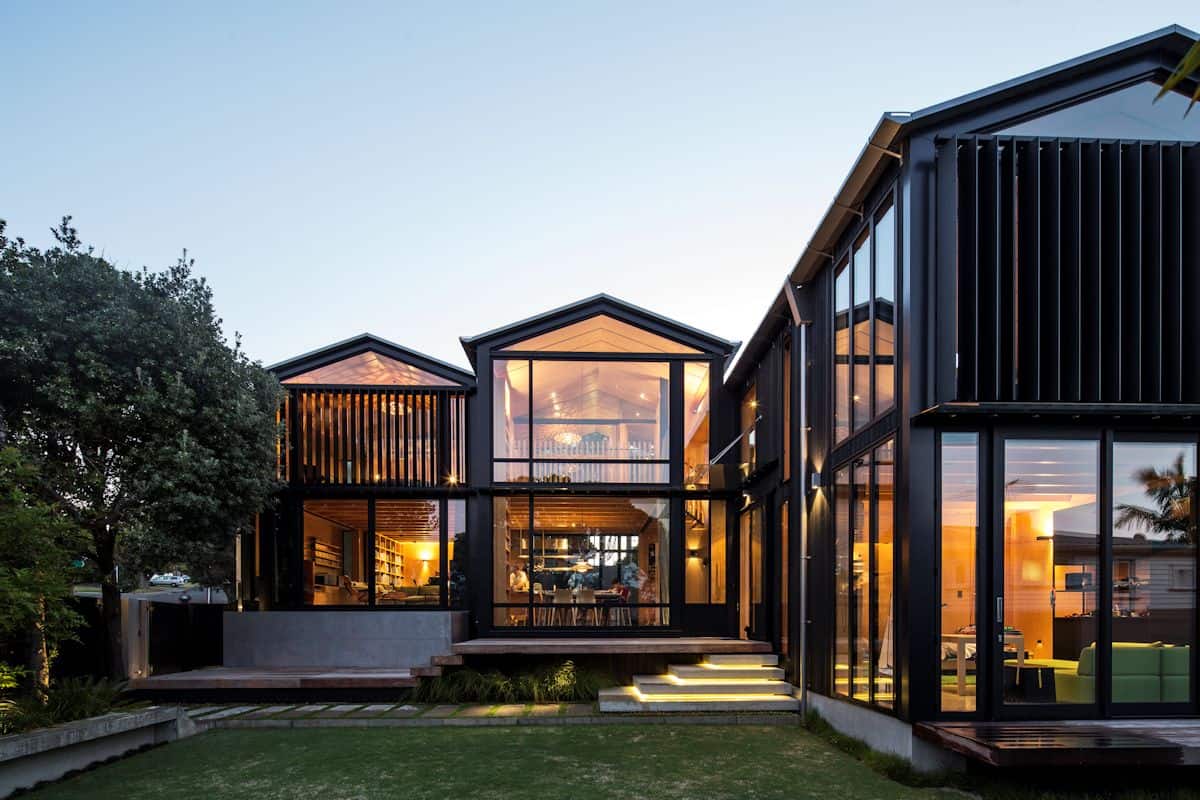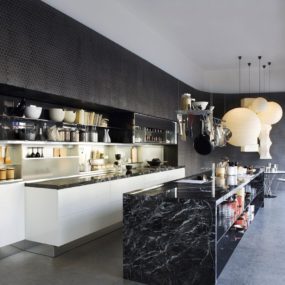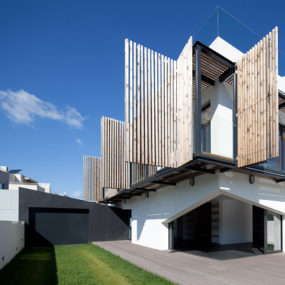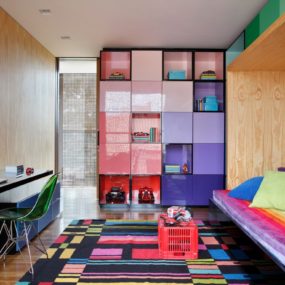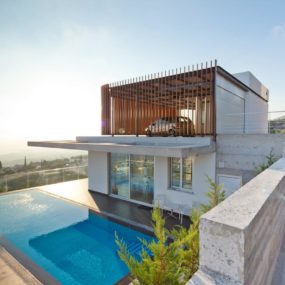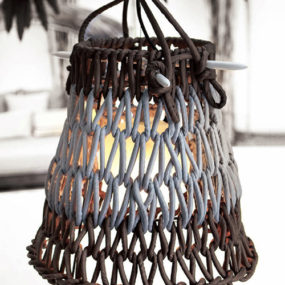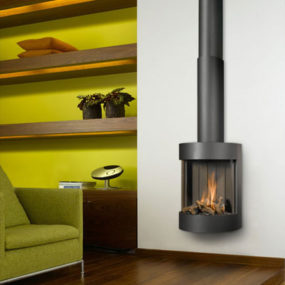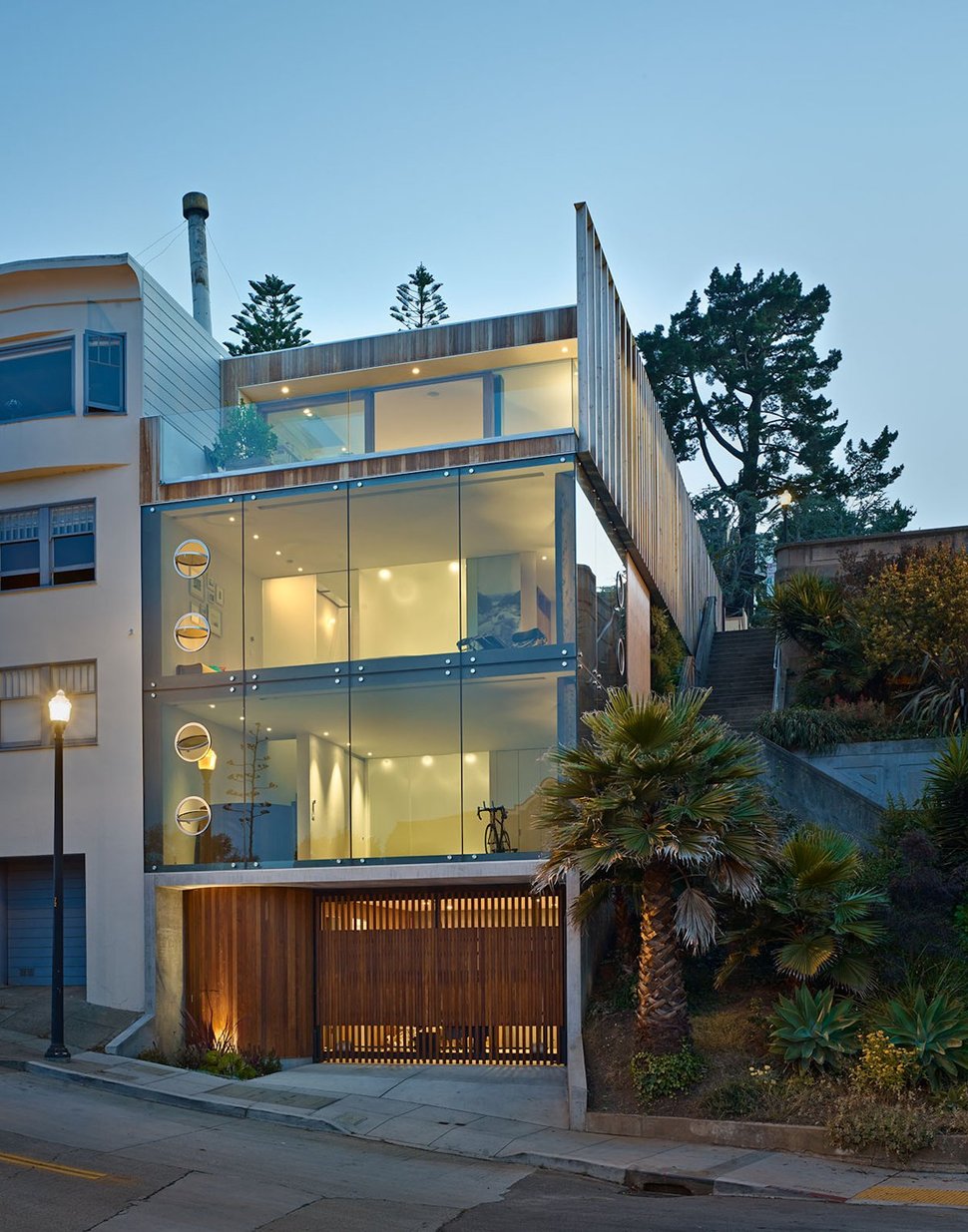
Located in San Francisco, California, USA above the Dolres Park on a very steep site with a public garden on one side, Craig Steely Architecture built Peter’s House in such a way as to disturb the land as little as possible. The 1800sqft begins with the 24’x24′ cast-in-place garage on the lowest point of the site. The architects then built a 3-storey glass tower on top of the garage and in front of the slope, allowing the hillside to remain intact. The top volume of the home is then reconnected with the landscape via a concrete terrace. Privacy from the public garden was created through a series of interior and exterior wooden louvers. The Louvers where also used in the creation of the garage doors.

The garage doors are louvered for air and light flow when closed. Since the louvers are rigid pieces of wood and there is no room for them to slide sideways, the architects designed the doors with a central hinge and two sections of the louvers – an upper and lower. This allows the door to bend up and out in a folding format.

The alternating double row of louvers on the garage door creates a slotted design that is much more private on the centre half of the door. Continuing the flow of wood is a drum shaped segment beside the garage door that wraps around a circular stairway that leads to the floor above.
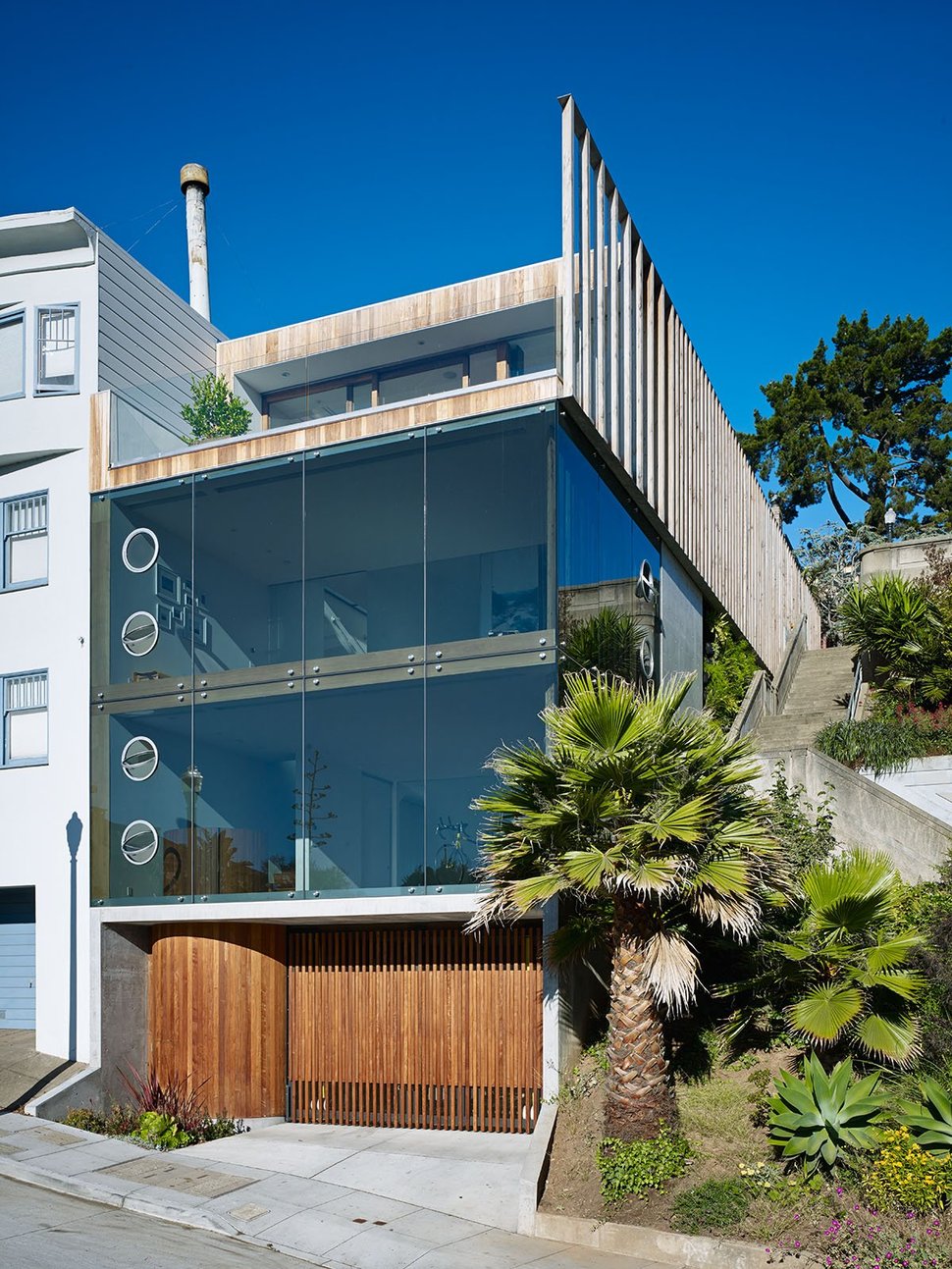
A flight of concrete stairs travels from the street up through the public garden to the top of the slope.
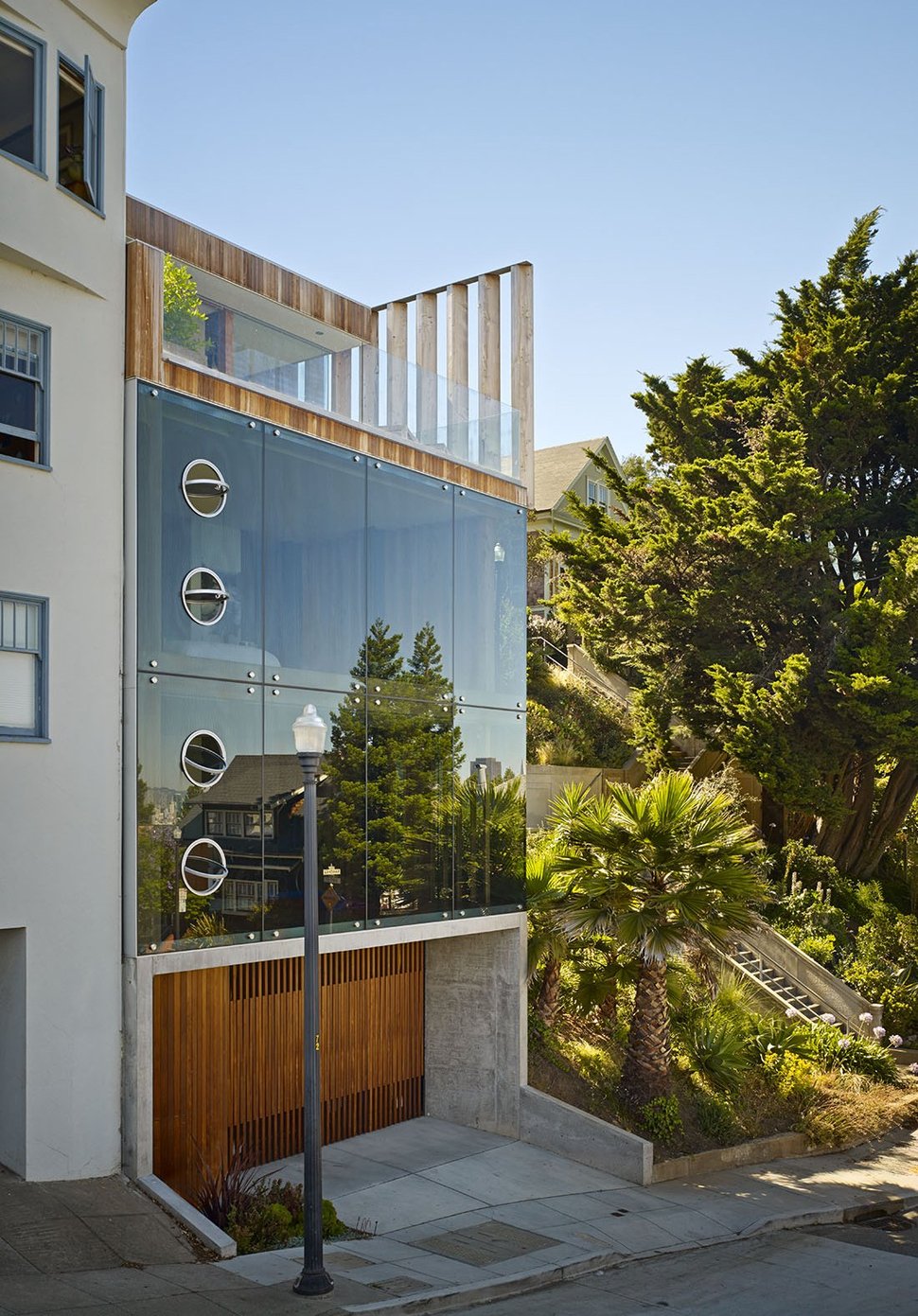
The public garden offers a lush green space to an otherwise urban setting and the architects took advantage of this with the glass tower design. While none of the large glazings, round “port holes” within the glazings pivot open for air circulation.
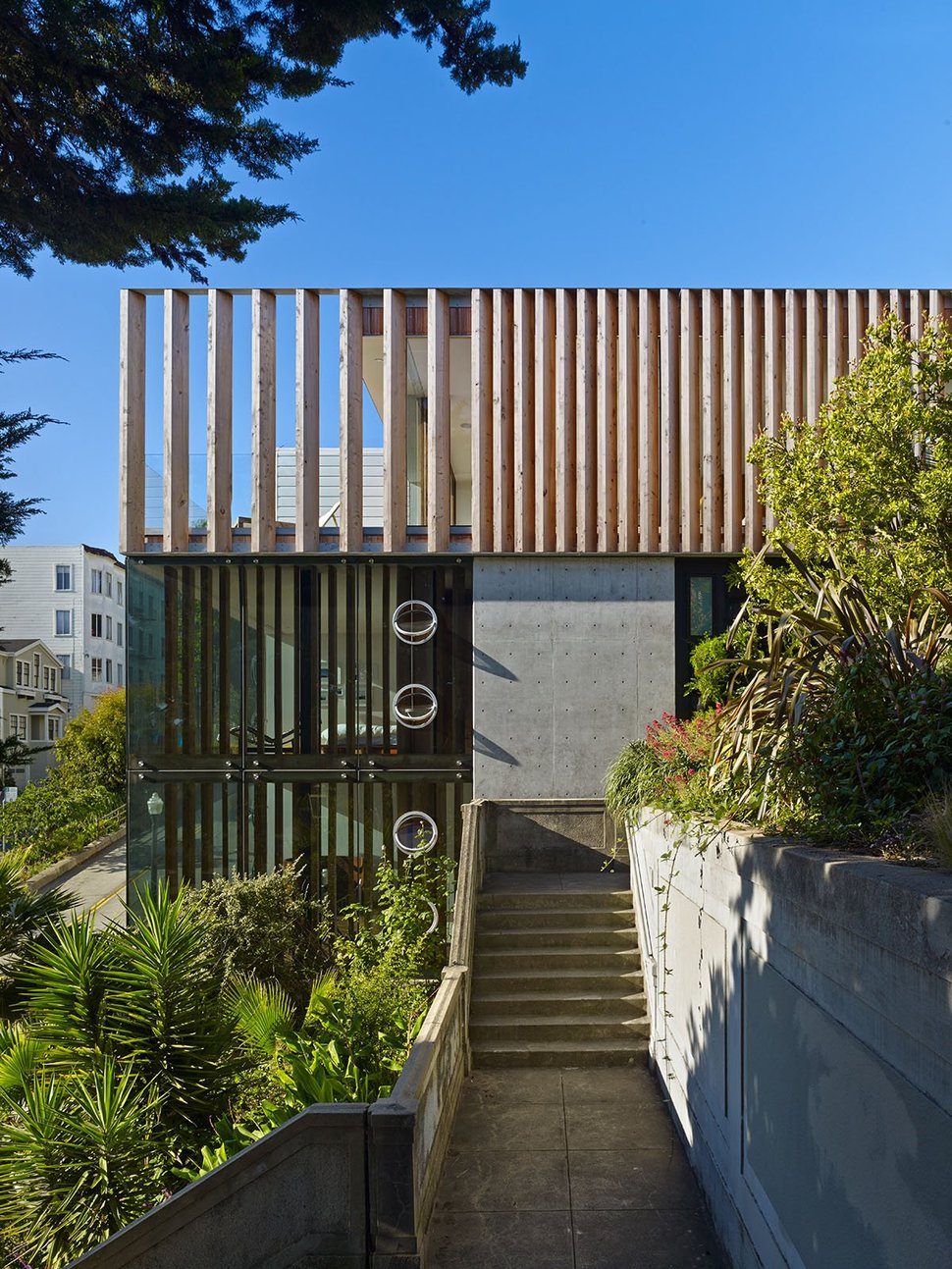
The public stairs arrive at the top of the slope a short distance from Peter’s house and a long landing connects them to another short flight of stairs that leads to the home’s back deck.
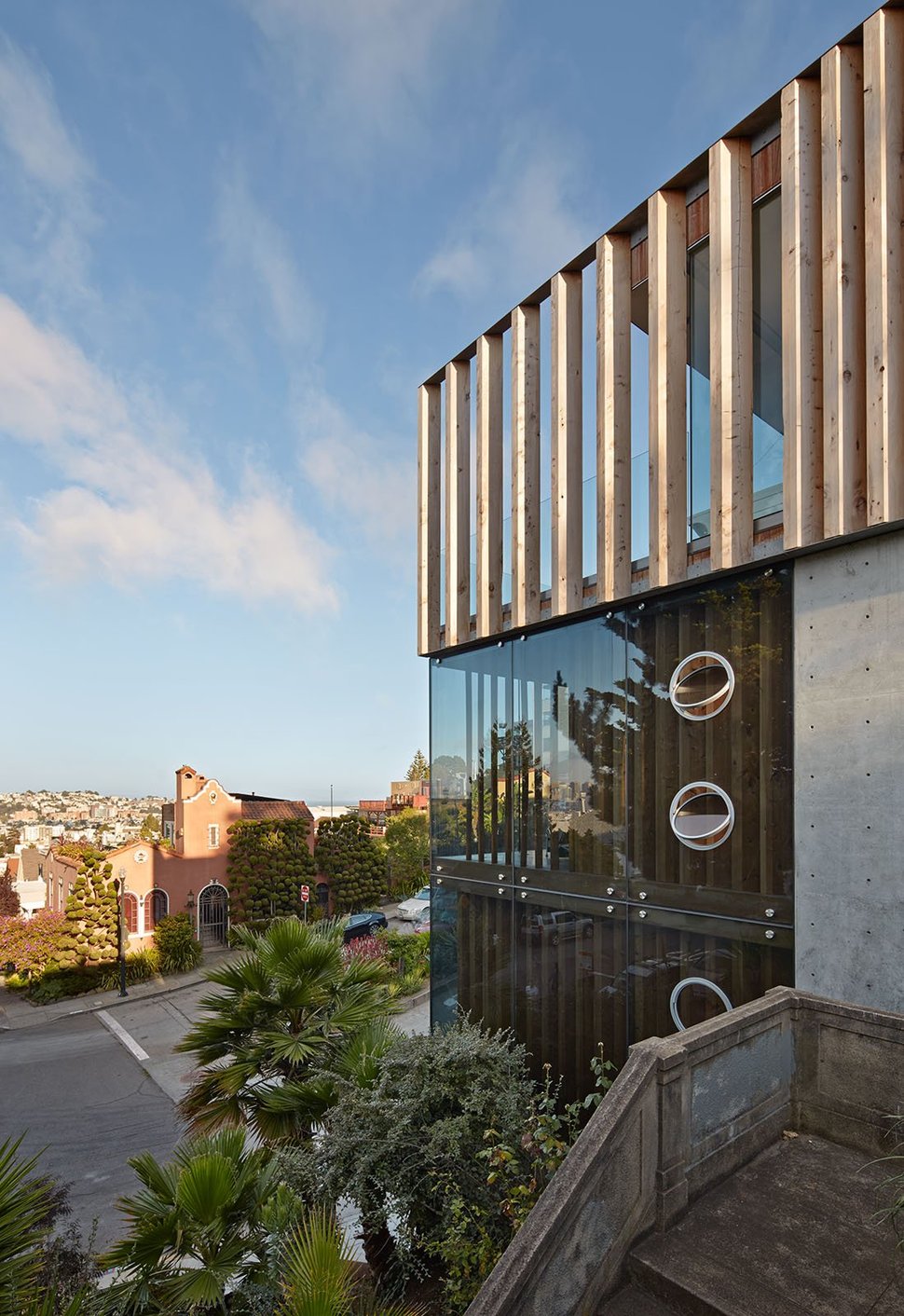
The wooden louvers on the side of Peter’s house where designed to offer privacy from the public gardens, but there is something else that is special about them. While the home was still in its design stage, a new on-ramp was under construction for the Golden Gate Bridge and a grove of Monterey Cypress trees needed to be cleared to accommodate the ramp. The architects where able to secure some of the downed trees and hired a local mill shop to create all 90 of the solid wood louvers used within the home. The exterior louvers are fixed while the interior ones are operable for privacy and light exposure.
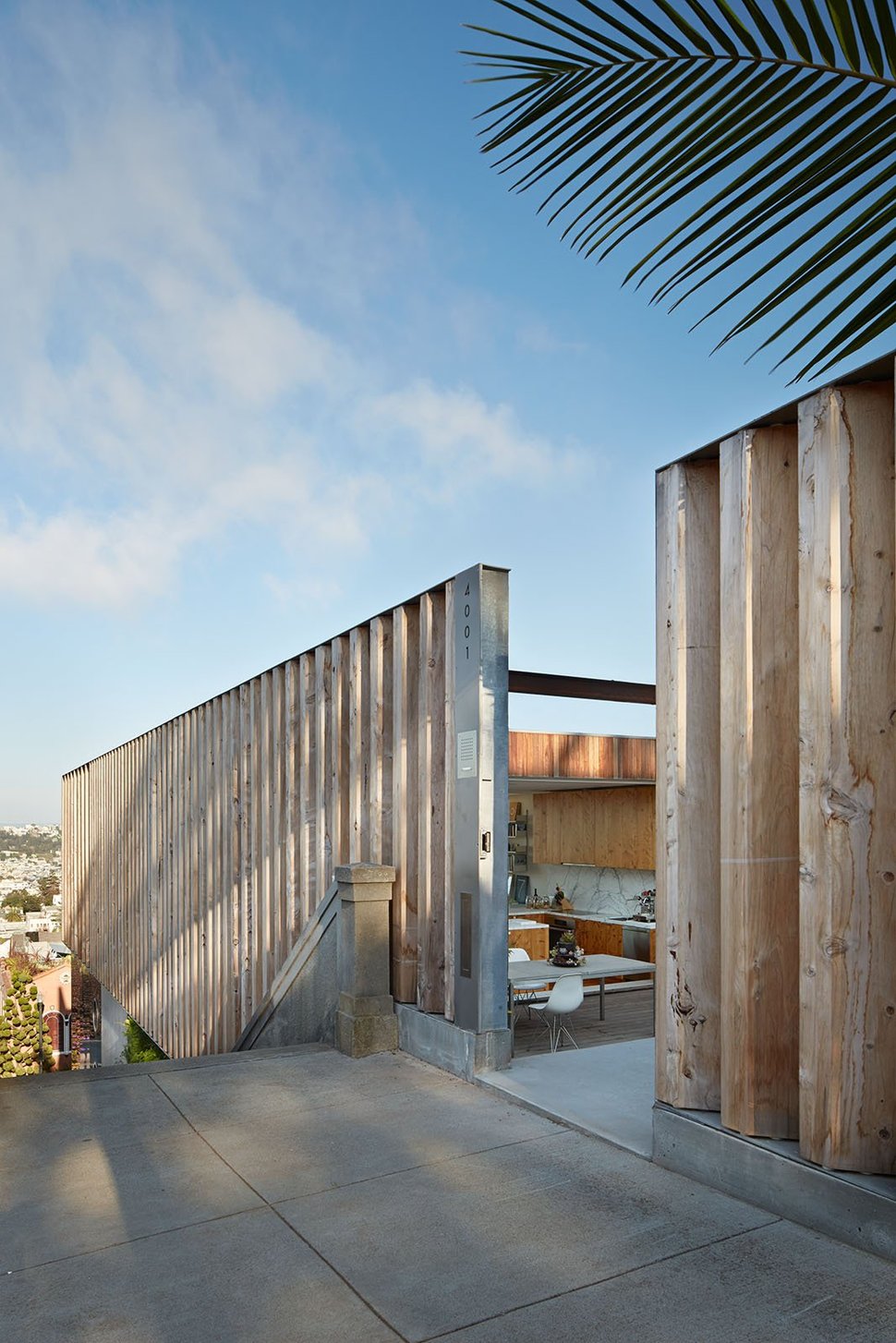
The outdoor stairs leads to a concrete “bridge” that connects to the homes back deck and to the slope itself. The deck is wrapped in the Montery Cypress panels for privacy.
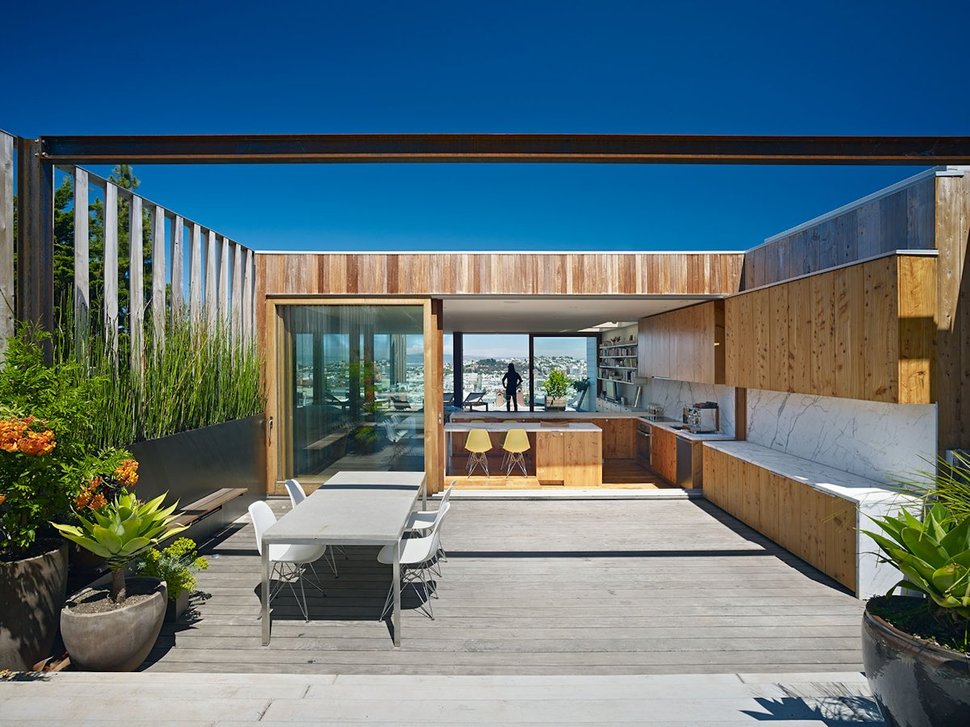
The deck is large and spacious and designed to be an extended living area for the home. Here planters continue the greenery of the public space while outdoor cabinetry creates a continuum to the kitchen cabinetry on the other side of the glazings. With glazings on 3 sides of the home, there are views in every direction.

The architects designed Peter’s House to have the social zone on the top floor to take advantage of the outdoor living area.
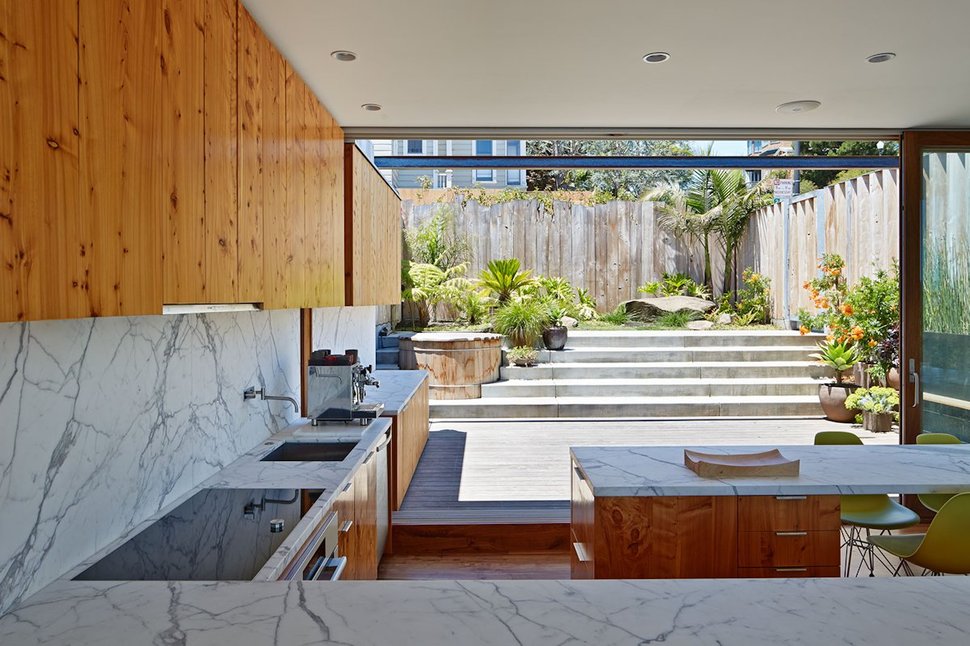
With the outdoor living area right off the kitchen, the homeowners can grow their own herbs and some vegetables within the containers if they so choose.
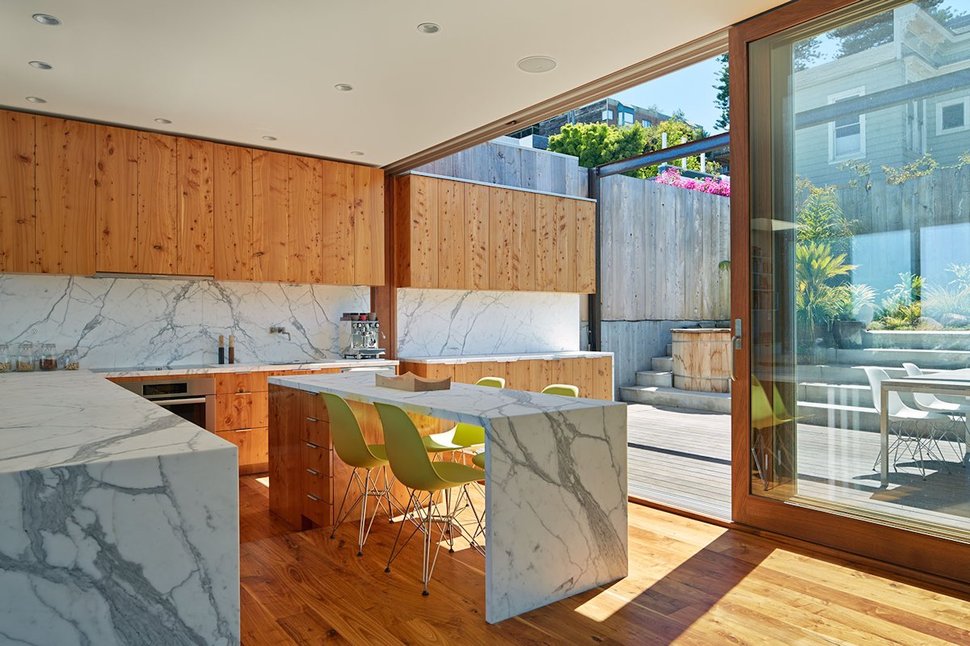
With the deck just off of the kitchen, the architects chose to use a marble with heavy veining on the counter tops and backsplash to compliment the grey within the concrete outside.
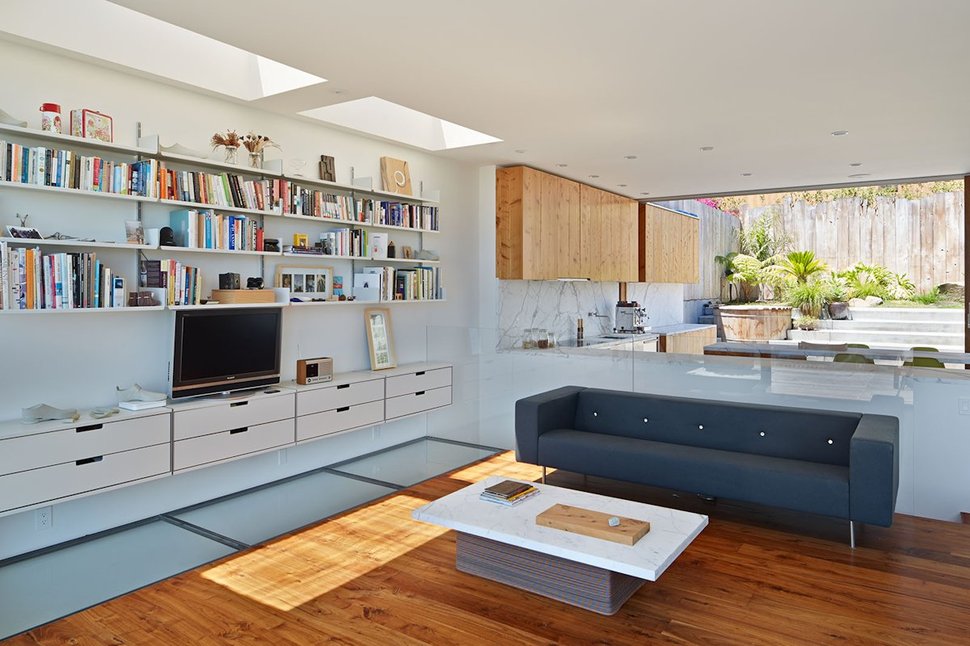
The living area just past the kitchen draws on the white within the marble while the wood flooring (also used in the kitchen) ties in with the kitchen cabinetry. While there are no windows on the media wall, skylights above flood the shelving with natural light and glass panels in the floor continue the flow of light to the volume below.
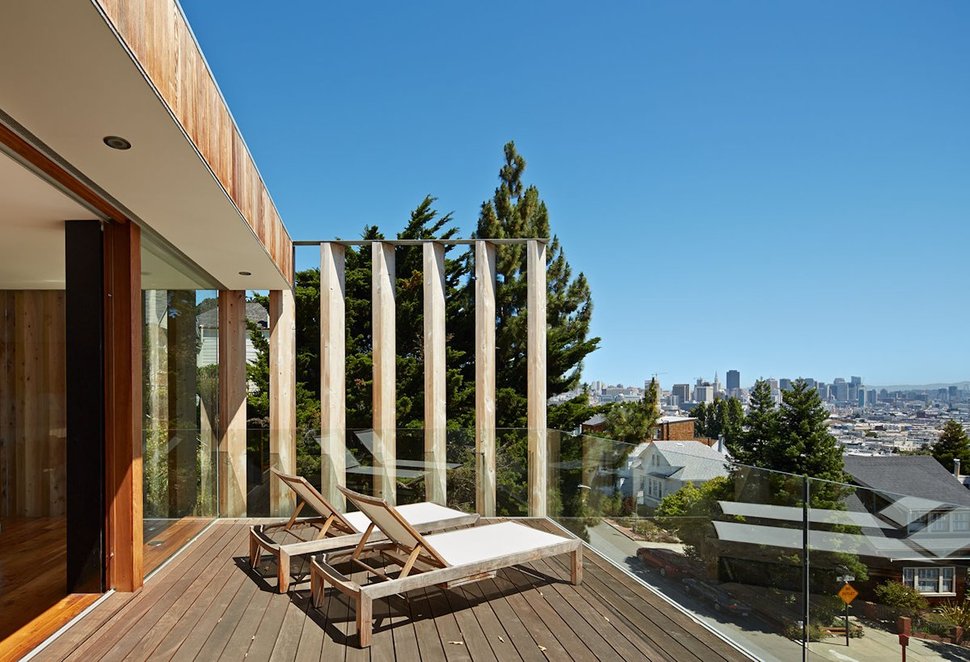
Just past the living room is a terrace overlooking the street below and the city beyond.
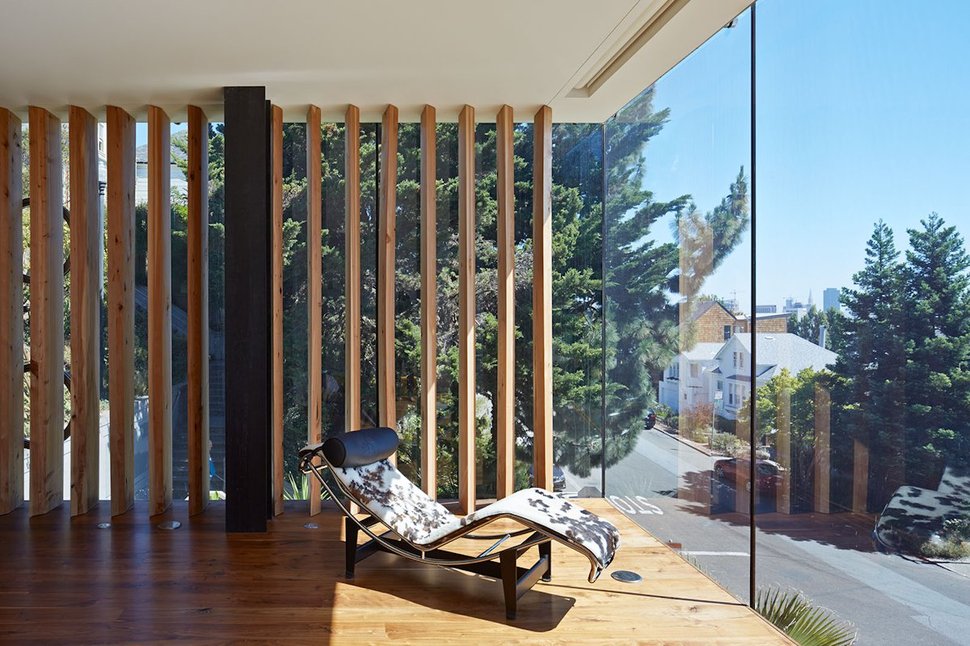
Just below the terrace, one level down is the Master Bedroom. While there is no deck off of the bedroom, the wall-to-wall glazings bring the outdoors in and a comfy Corbusier lounge chair is the perfect place to enjoy the outdoor views. When its time for privacy, the louvers can be closed.
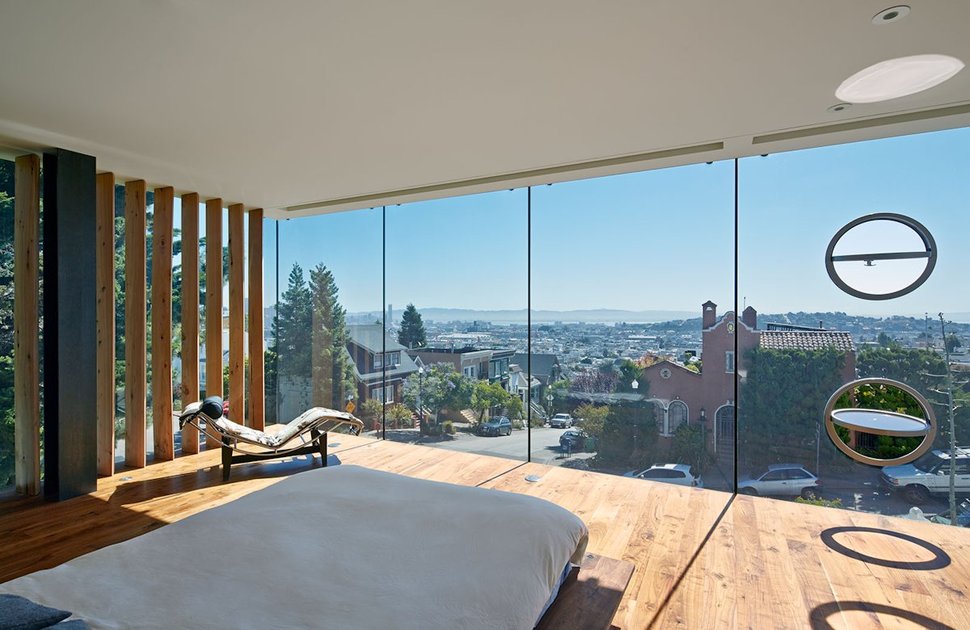
The bedroom has a panoramic view of the cityscape in front and a view of the public garden to the side. Two large portholes create an interesting visual witin the glazings that is picked up on with the choice of light pendant on the ceiling.

Behind the Master Bedroom and surrounded by frosted glass is the ensuite. The same heavily veined marble is used on the floor, walls and counters. The only place it is not featured is on the large expanse of mirror above the vanity.
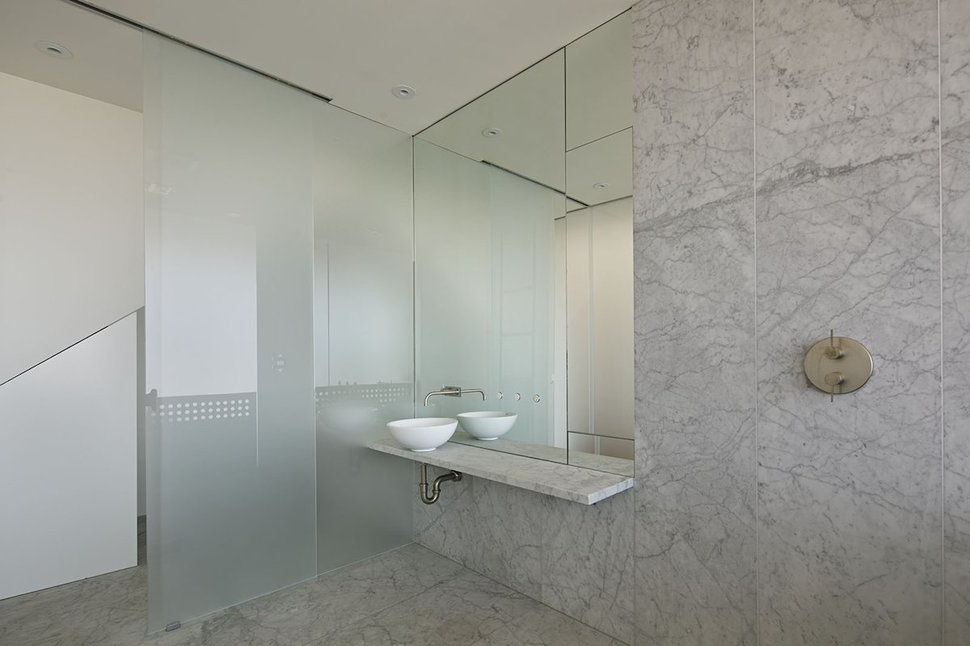
With the ensuite wrapped in marble, there is no need for a separate shower room.
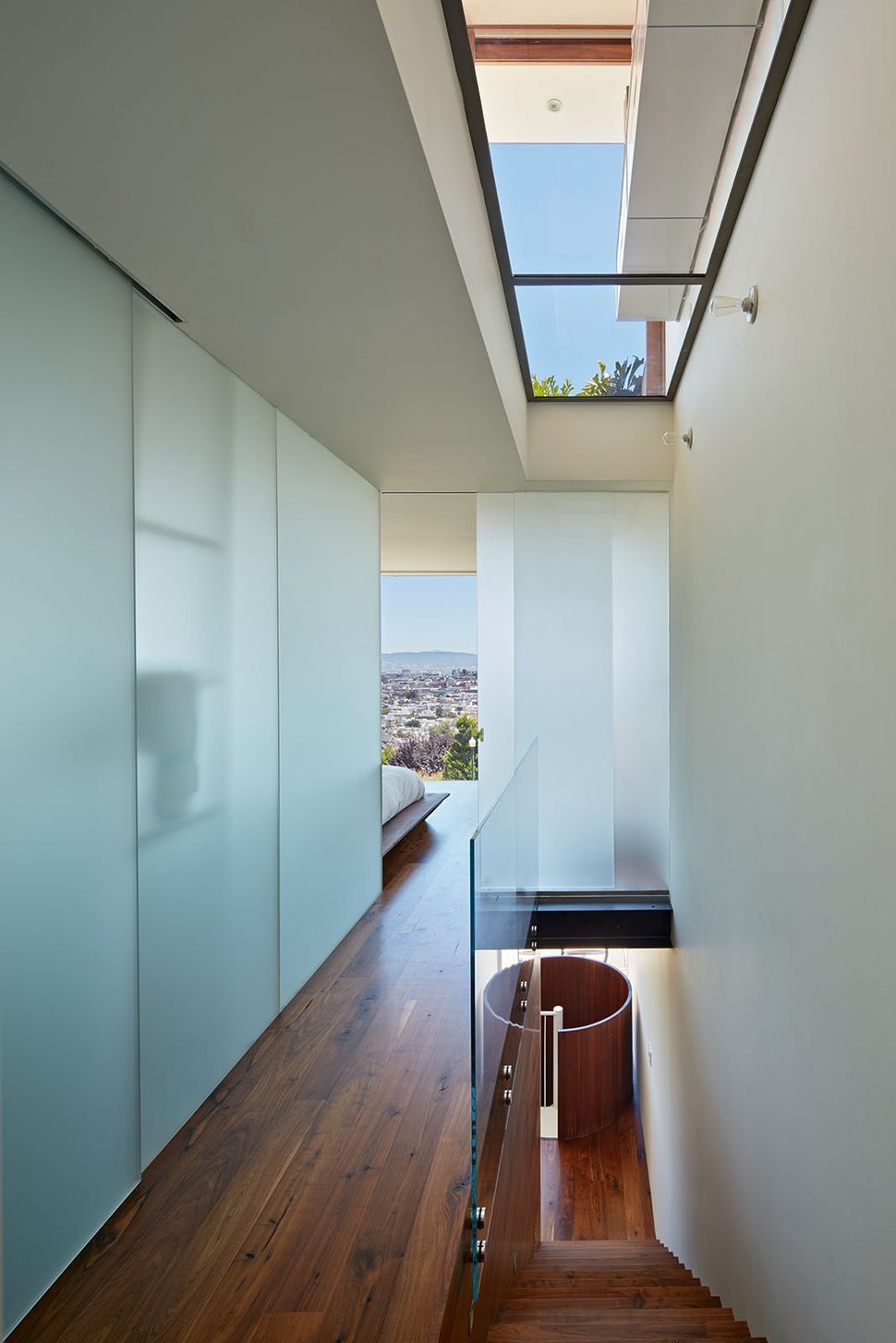
A hallway between the ensuite and bedroom leads to a flight of stairs that leads to the volume below. From there, a circular staircase leads to the garage. The stairwell is kept light and bright via the natural light traveling from the living room skylights through the glass panels in the living room floor.

A second bathroom on the second level also features marble, but in this case a black marble with pale grey veining. The stark white of the tub, vessel sink and wall below the vanity as well as the frosted glass wall keep the room from feeling dark.
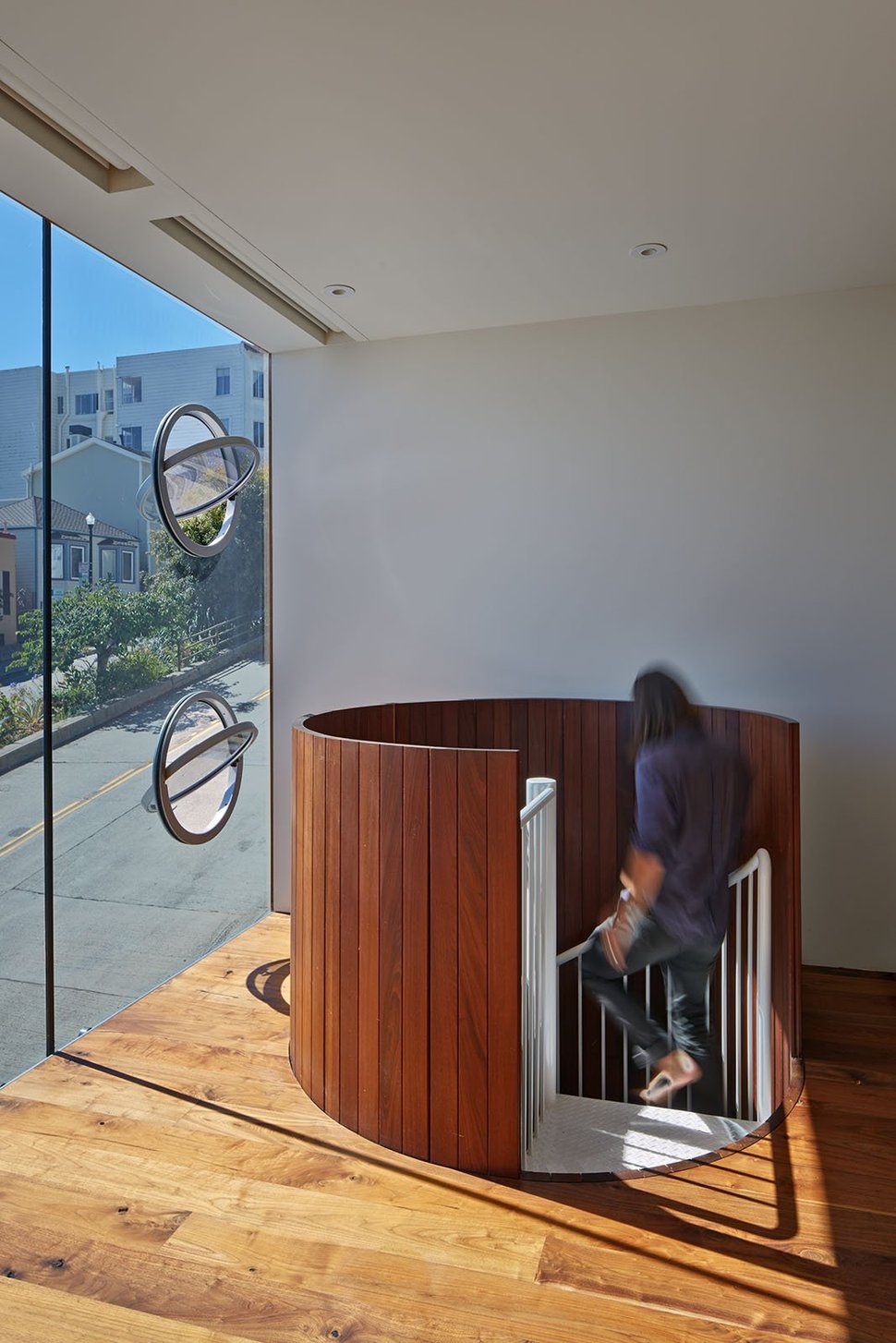
The second volume is connected to the garage via a circular stairway of white powder coated steel wrapped in vertical wood 1x6s.
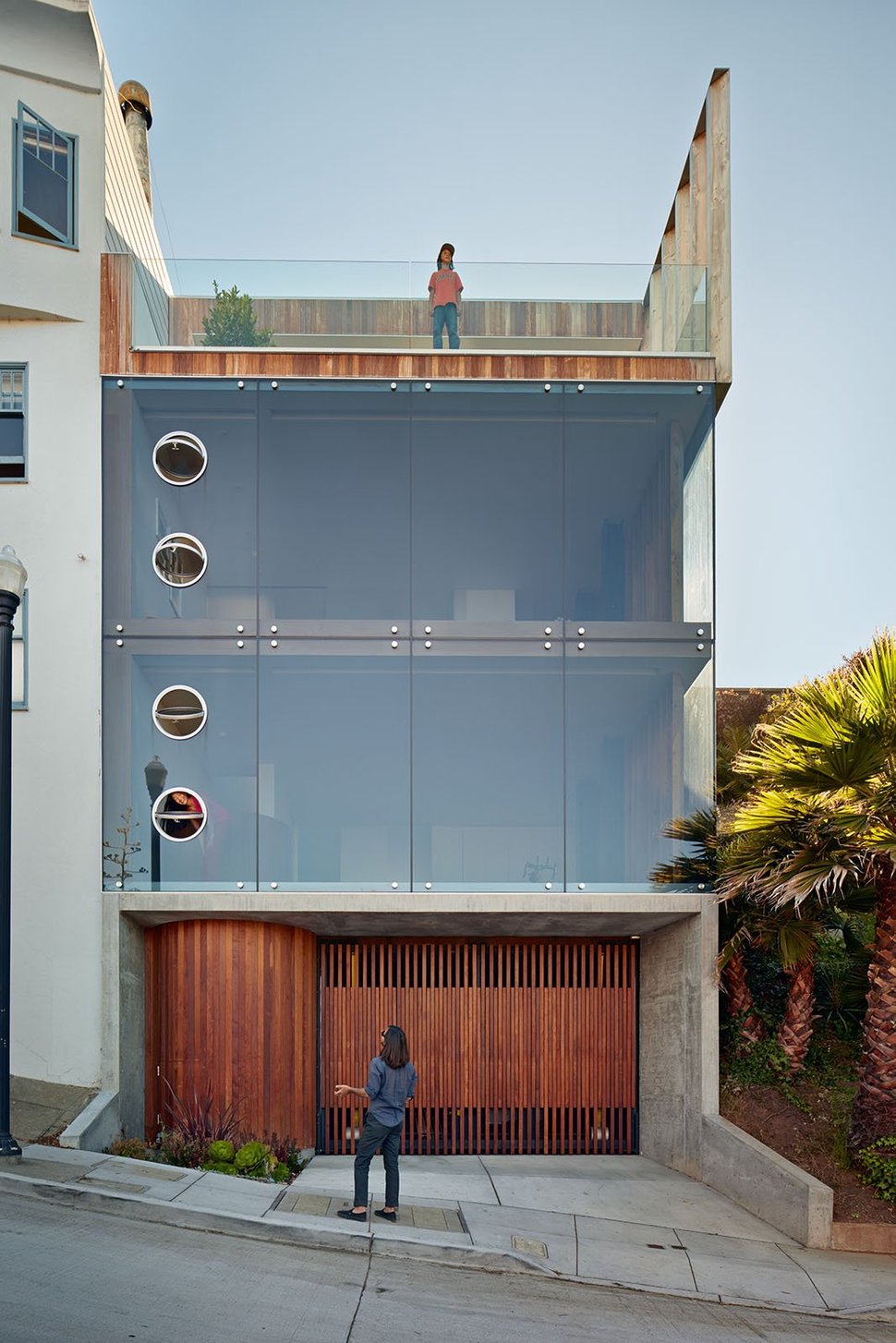
By designing the home as a free standing tower, connected to the land by a concrete bridge above and the garage below, excavation was reduced to 1/3 of the norm thereby minimally affecting the native hillside and natural drainage.
Craig Steely Architecture
Photography by Bruce Damonte
